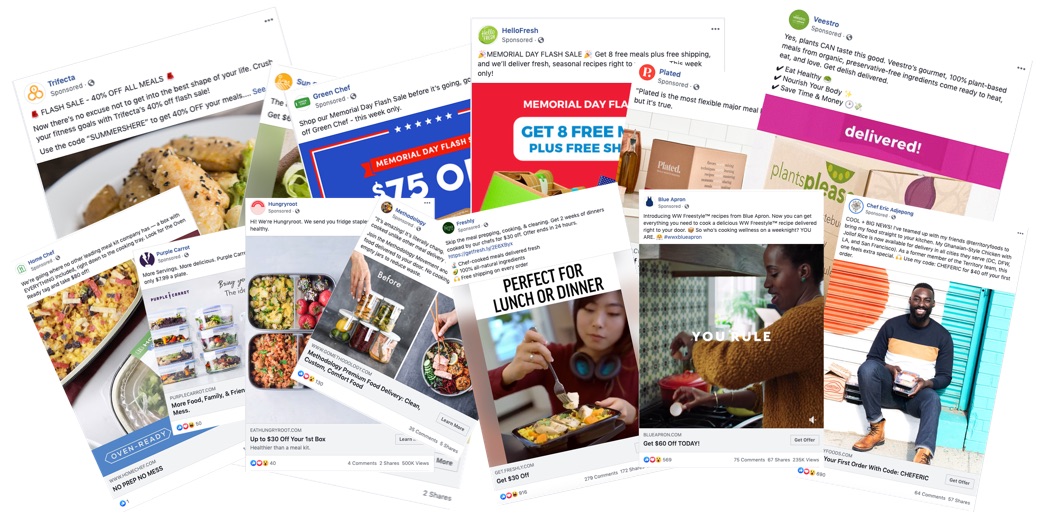
The barrier to entry for putting up digital ads now is almost nonexistent. You can throw together an ad on any social network or search engine in minutes. This is a huge shift for lots of businesses. It opens up a marketing channel they couldn’t previously afford. That efficiency also allows businesses to experiment and test marketing concepts almost instantly.
But with that ease and speed, comes some risk. In the rush to get ads up, it’s easy to neglect the quality of the content that goes into them. If you don’t put some care into it, you’re likely to burn through budgets without much to show for it.
Ads are often the first thing new customers see from your brand. As a result, the messaging and images need just as much thought and care as you put into your website.
And like any marketing extension of your brand, it needs to deliver on two key things to be effective:
- Differentiation: How does your business deliver on your customer’s needs in a unique way? What position will it occupy in their minds? Why would your customer choose your business over all the other options they have available?
- Benefits Provided (Not Just Features): What outcomes will your customer experience when they use your product or service? How will the features you provide enable them to do something new? How does your offering make their life better?
It sounds simple, right? But take a quick peek at your social feed and you’ll see a whole bunch of businesses that neglect one or both of those tenets.
To help highlight both concepts, let’s look at a category that’s extremely popular and competitive right now — meal delivery kits.
These companies put tons of resources into their ad campaigns, but that doesn’t mean they’re immune to the same challenges every business faces.
Differentiation
The meal delivery space noise level has been pushed to the max.
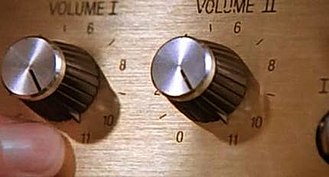
If you were looking to try a service for the first time, you could quickly get lost trying to compare and contrast all the options.
Here’s a collection of meal service ads all taken from Facebook on the same day.
To start, we’ll look at the visuals for the ads.
First we have the meal plan boxes:
 When meal delivery services first came out, these boxes might have intrigued people as they scrolled through their feed. Now that so many services use the same style of packaging the boxes gets reduced to a visual shortcut for the category as a whole.
When meal delivery services first came out, these boxes might have intrigued people as they scrolled through their feed. Now that so many services use the same style of packaging the boxes gets reduced to a visual shortcut for the category as a whole.
It’s definitely not a point of differentiation for any brand.
It also means rather than standing out because of the box, the repetitiveness of it can turn into a trigger to encourage users to ignore the content completely.
Some companies now avoid the boxes and put more focus on the containers for the meals:
 This approach highlights the food and the packaging. It also offers new opportunities to differentiate visually.
This approach highlights the food and the packaging. It also offers new opportunities to differentiate visually.
On the low end, we have airline-style plastic dinner trays. But on the high end, we have Methodology’s clear, reusable jars.
The jars are visually striking and serve as part of their larger “Food-As-Medicine” brand angle. It’s not a drastic point of difference but in this space, even a small edge could help a brand stick in a customer’s brain.
Next we have the basic food shots:
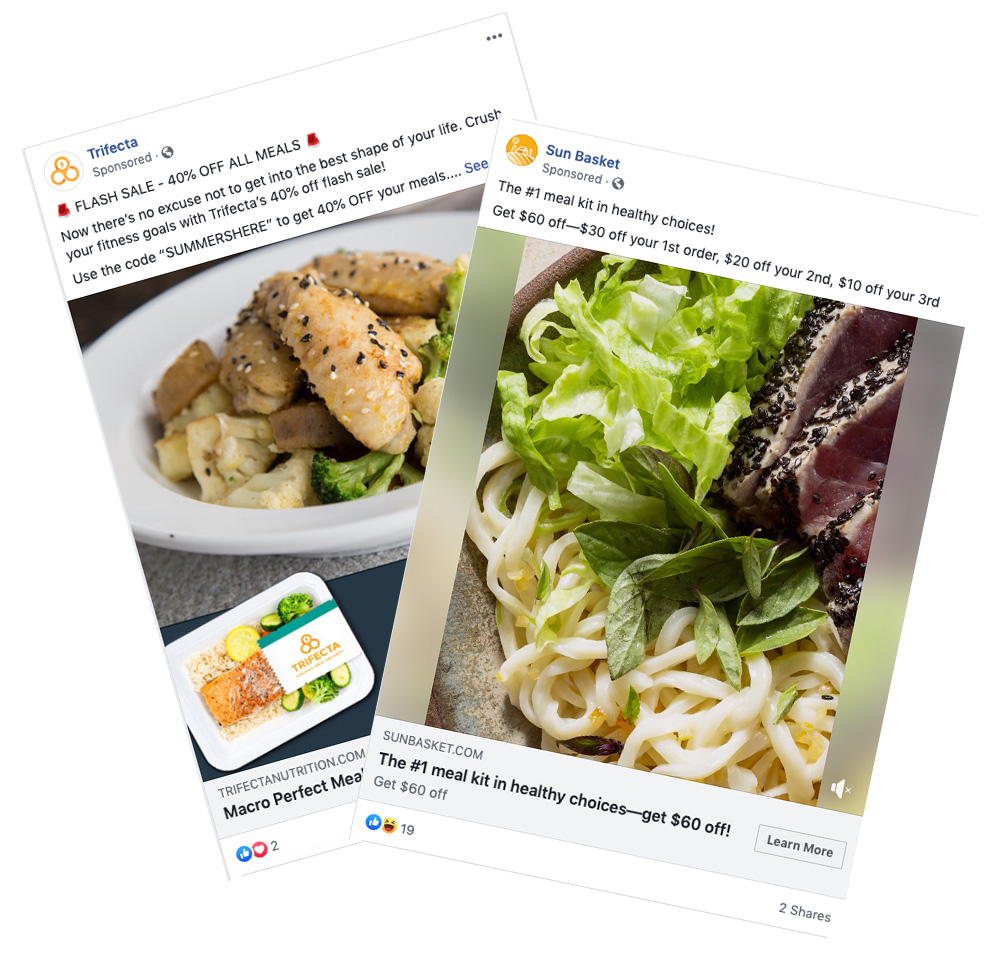 It’s not that the food is unappealing, but it also doesn’t stand out.
It’s not that the food is unappealing, but it also doesn’t stand out.
These days our feeds get littered with food recipes and friends sharing pics of great meals. In that environment, there’s nothing about these images that stands out or would create a strong point of differentiation for their respective brands.
On the messaging side, we also see a lot of copy-cat behaviors.
In particular the focus on price and sales turns all the services into a singular blur.
- “Flash Sale – 40% off all meals!”
- “Get 8 free meals plus free shipping!”
- “$80 off your first month”
- “Up to $30 off your 1st box”
Not only does this muddy the positioning of the products, but it forces customers into a price-first mentality.
When competition gets over-saturated and everyone competes around price, it turns into “a race to the bottom”.
The other big point of similarity with most of the plans is the focus on health. Encouraging people to cook at home with quality ingredients is a great mission. The problem is that it’s such a common angle for these services it loses its impact for any specific brand.
Differentiation that works…
Some points of differentiation in this category that the brands could lean into more are:
- Prep Required vs. Fully Cooked: There are now lots of variations on both ends of this spectrum. Brands could lean into this more to help further distinguish their offerings.
- Specific Diet styles: There are services now for every diet type. Yet, a lot of the niche offerings don’t emphasize this point enough and blend in with the masses.
- Access to Premium Recipes or Dishes: Partnerships with chefs is something that seems to be popping up more. Those offerings could extend to include techniques taught by pro chefs to improve your cooking skills
One last point is price. While price differentiation has been abused in this space, EveryPlate is one company that uses price effectively:
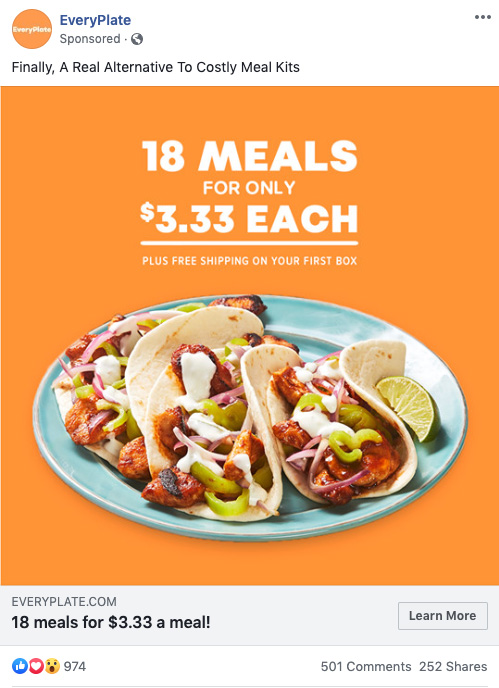
Their entire value proposition centers around providing the lowest cost meal plan service. In this case, it’s not about “Flash Sales” and endless discounts, it’s a core business strategy.
They do need to be careful with how it’s presented though. Because every brand talks about price, they could do a better job emphasizing “This is NOT a sale, it’s what we do.”
Now that we’ve looked at the challenges with differentiation, there’s another point where these brands fail to separate themselves. They focus heavily on the features of their products over the benefits they provide.
In other words, they focus on the product rather than the customer.
Benefits Over Features
Customers don’t buy products or services for the features they include. They buy products and services for what those features enable them to do in their lives.
When customers first see a new product or service they have an emotional reaction around how that offering can improve their life.
That’s not to say there’s no place for talking about features. As customers move past first reactions, they’ll dig in to learn more about the specifics of an offering.
But with ads the main goal is usually to get customers to click through to a website. There isn’t much room for feature deep-dives. It’s much more about an initial emotional connection.
If all you do is describe your offering’s features, your customers have to do the mental heavy lifting. They have to make the leap on how your offering improves their life.
When you show and speak to benefits, you do that work for them.
The examples above focus heavily on the features and functions of their services. The images show packages and foods.
Those are features.
What customers are buying into are healthier, happier lives. They’re buying into ways to simplify their lives. They’re buying into ways to cook more or even learn to cook. They’re buying time together with loved ones.
A photo of a plate of food barely touches on that.
A more effective way to demonstrate those benefits is to show the role these meals play with actual people.
This set of ads highlight those points much better:
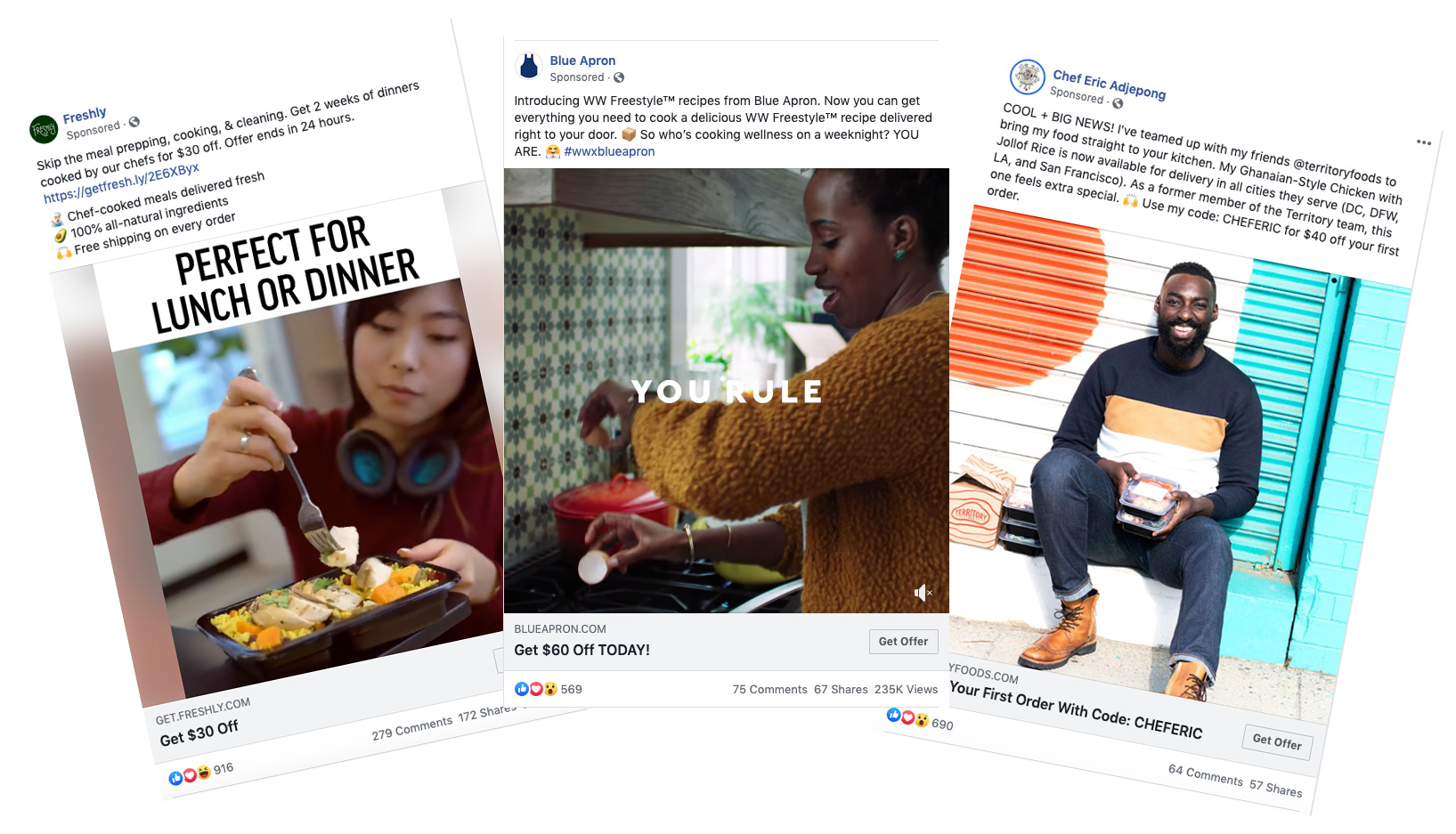
In these examples, we get a much clearer view of the benefits for people.
The first two speak to the eating and cooking experience. The third is a little different, but it’s still showing a benefit of access to a celebrity chef. The dish is secondary to that.
Blue Apron (in the middle above) is probably still the most famous meal kit service. They were one of the first to do it, so it’s not surprising they’ve discovered such a good job balance in their marketing around the relationship between people and food.
Improve Your Own Ads With Better Positioning and Messaging
You don’t have to be a billion dollar company to take advantage of these concepts.
All you have to do is spend some time getting clear about what makes your business unique and then show and speak to the outcomes you provide.
If someone saw your website or ads for the first time how much heavy lifting would they have to do?
Would they have to dig through your features to figure out how you improve their life or do you just tell them?
Is it clear why your service or product is unique compared to the alternatives out there?
If your business can nail its differentiation and speak to the benefits it provides, you’ll engage customers more quickly and keep them around longer.
You’ll also get a much better return on your ad campaigns.
Map & Fire can help your brand improve its positioning and messaging. Download our free worksheets below or reach out for a consultation.


